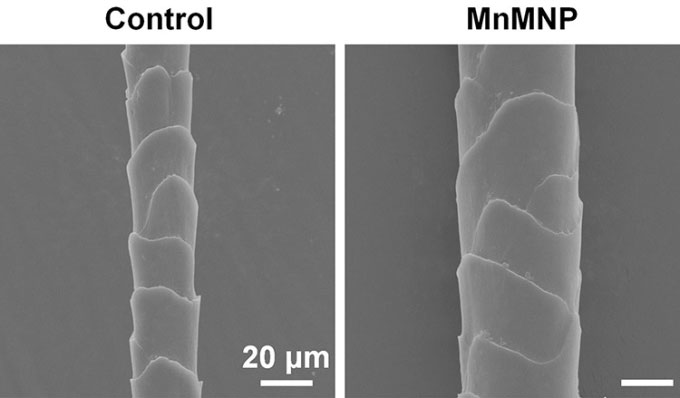Mouse experiments show that a new microneedle patch helps hair regrowth that is thicker and denser compared to the old testosterone treatment method.

Hair regrowth in mice treated with the new microneedle patch (right) is thicker than that of mice treated with testosterone (left). (Photo: Nano Letters)
Chinese scientists have developed a new microneedle patch to treat a common form of hair loss and successfully tested it on mice, according to New Atlas on November 4. The new research was published in the journal Nano Letters.
The study focused on the most common form of hair loss, androgenetic alopecia. A oxidative imbalance is believed to be the main cause of this condition. An excess of reactive oxygen species (ROS) on the scalp damages the cells responsible for hair follicle development.
In the new study, the team of experts used machine learning technology to effectively screen 91 different nanozyme “candidates” and predict which compound would behave most similarly to superoxide dismutase, an enzyme that naturally neutralizes ROS in the body. Ultimately, the selected compound was manganese thiophosphate (MnPS3). The research team integrated MnPS3 into nanoplates and tested it with human dermal fibroblasts, successfully reducing ROS levels without causing harm.
Next, the scientists created a microneedle patch containing this compound, designing it to diffuse deeply into the skin to eliminate excess ROS. The patch was tested on mice with androgenetic alopecia. Within 13 days, they regenerated hair, with the hair fibers growing thicker and denser compared to those treated with testosterone or minoxidil.
This research offers great promise for developing new hair loss treatments. Additionally, the scientists view this as evidence that machine learning technology can accelerate the development of nanozyme therapies, potentially leading to advancements in wound healing and tumor treatment.


















































